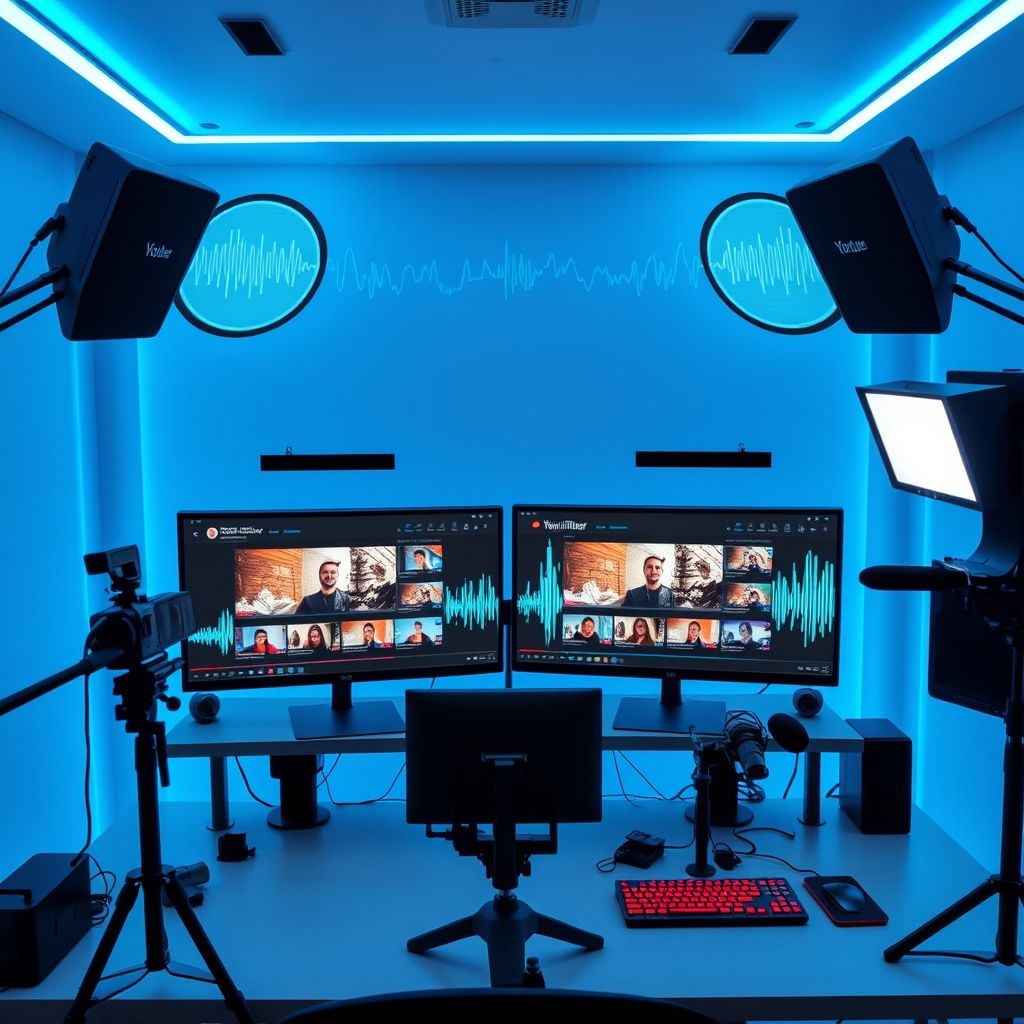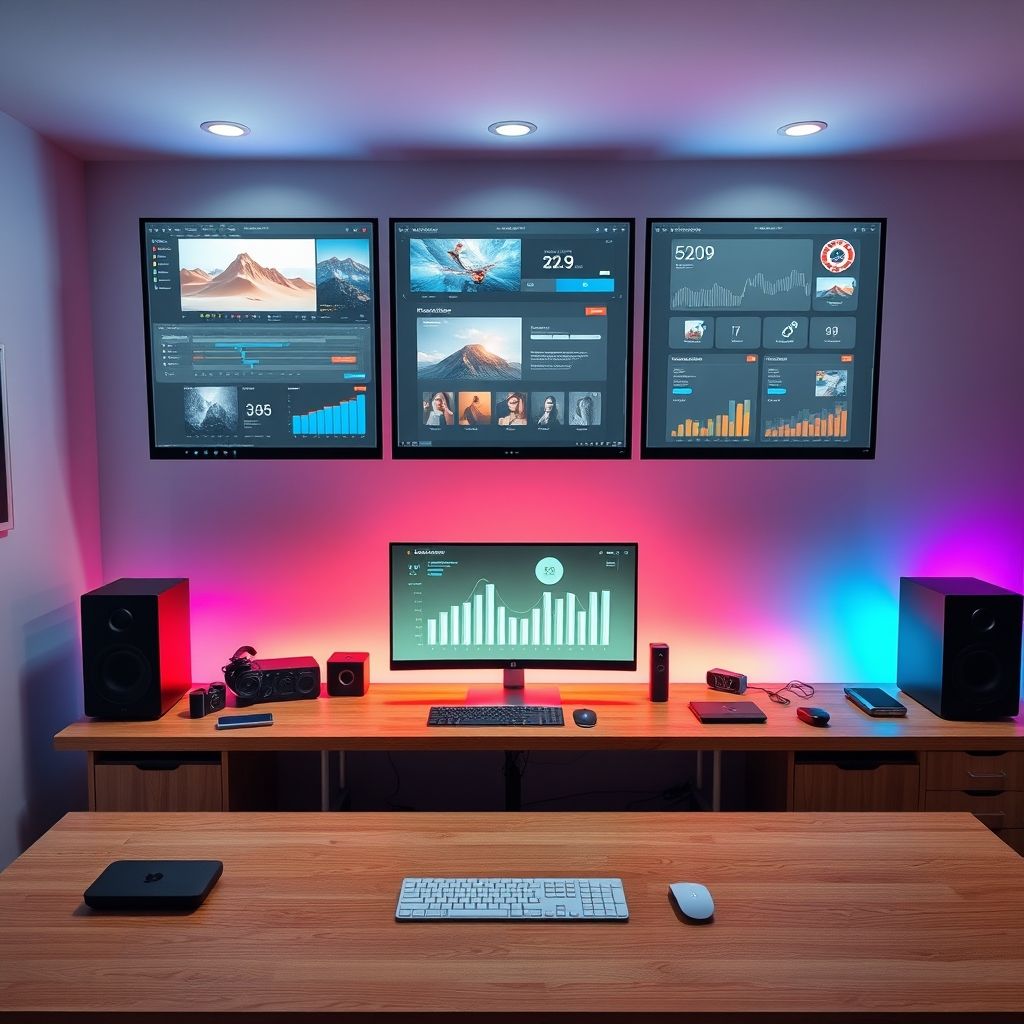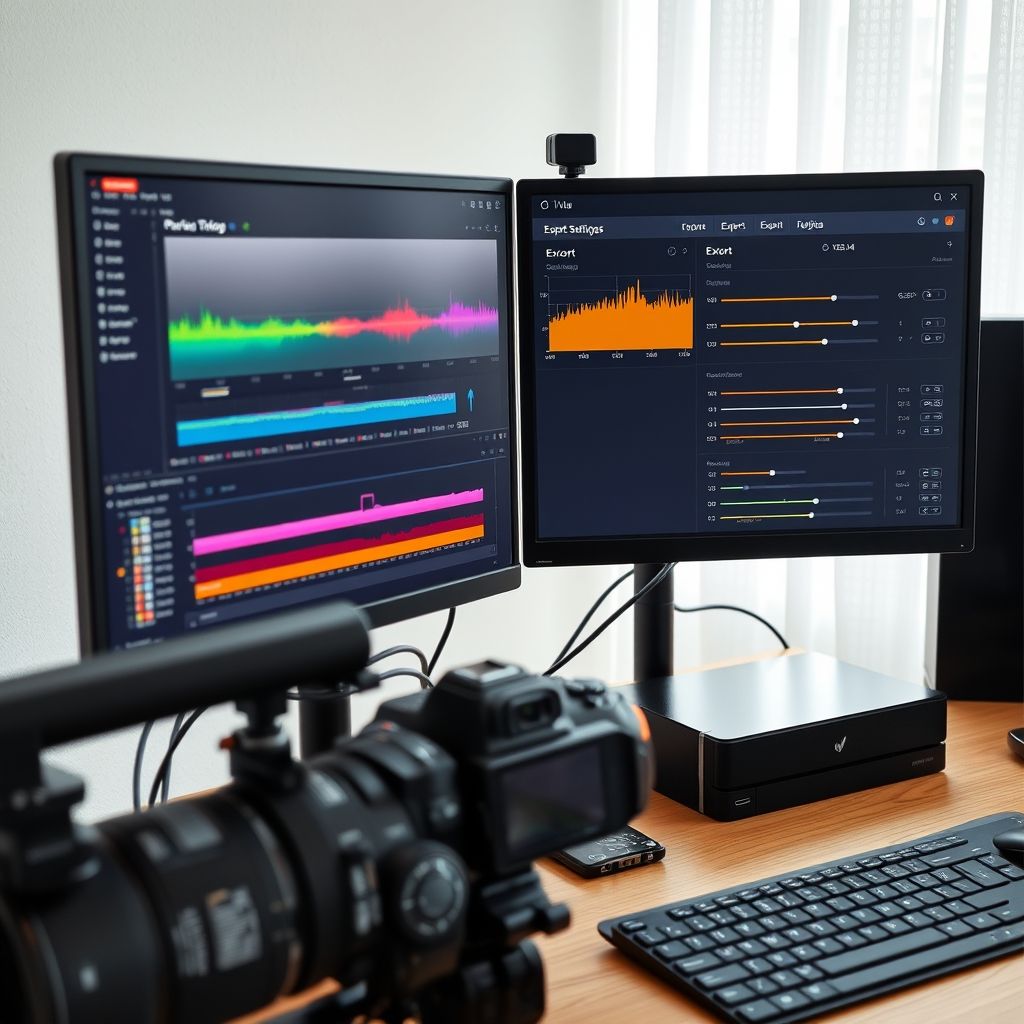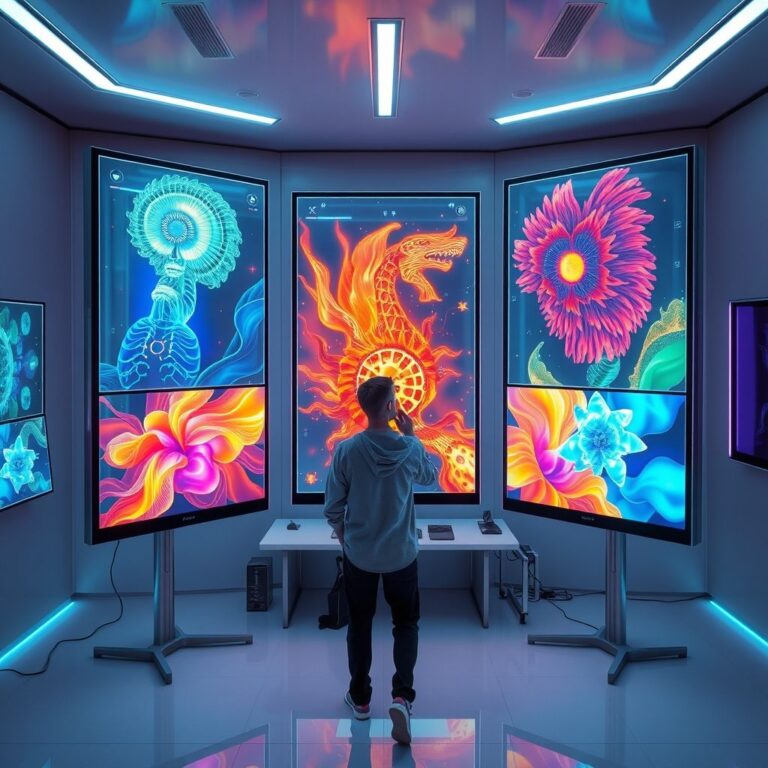How to Choose the Best AI Video Generator for YouTube Creators: Synthesia vs RunwayML vs Canva Compared
Ever felt stuck trying to produce engaging YouTube videos without spending hours or breaking the bank? You’re not alone Creating content quickly, affordably, and with real flair is a challenge for many creators today. That’s where AI video generators come in—they’re game-changers that can revolutionize how you craft videos.
Imagine cutting your production time in half, saving on costly equipment and talent, and even reaching a global audience with multilingual support. Plus, with avatar features, you can create polished videos that feel personalized and professional without ever stepping in front of a camera.
In this article, we’ll dive into three top platforms making waves in the creator community: Synthesia, RunwayML, and Canva for YouTube. You’ll get a clear comparison of their pricing, standout features, and crucial tips for exporting videos that thrill your audience.
Whether you’re just starting or scaling up, by the end, you’ll be equipped to pick the perfect AI video generator that fits your style and goals. Ready to transform your video creation process? Let’s explore what these platforms have to offer.
What the Research Reveals About AI Video Generators for YouTubers

AI video generators have rapidly transformed the landscape of content creation on YouTube by simplifying the entire production process. These tools eliminate the traditional need for actors, studios, and complex editing setups, enabling creators to produce high-quality videos using just text and digital assets. As a result, YouTubers, marketers, and educators alike can efficiently scale their video content without sacrificing quality or authenticity.
Core research highlights how platforms like Synthesia, RunwayML, and Canva integrate advanced AI features that dramatically reduce both time and costs associated with video production. From multilingual support to realistic avatars and voice cloning, these capabilities make video creation accessible to a broader audience and open new possibilities for engaging a global viewership.
Simplifying Video Production with AI Features
One of the most striking findings is the wide adoption of AI-driven features such as avatars, text-to-video conversion, voice cloning, and multi-language options. These components enable users to generate professional videos by simply inputting scripts or selecting styles, without requiring filming equipment or on-screen talent. Platforms like Synthesia excel at creating lifelike AI avatars, while Canva offers intuitive design combined with video tools, and RunwayML provides powerful machine learning models for creative effects.
Target Users and Scalability
The primary users of AI video generators include marketers aiming to streamline campaigns, educators needing to produce instructional materials quickly, and creators focused on scaling content output efficiently. These tools allow such users to reuse templates, customize content dynamically, and distribute videos in multiple languages, overcoming traditional limitations on time and budget.
Impact on Time and Cost
Studies and user feedback consistently show that AI video generators can cut production time from days or weeks down to hours or even minutes. This acceleration has a direct impact on reducing costs by minimizing needs for human resources and expensive equipment. For example, a typical video produced using Synthesia or Canva can avoid expenses related to location shoots, actors’ fees, and studio rentals, making content creation more affordable and agile.
Comparing Synthesia, RunwayML, and Canva: Pricing and Features Breakdown

Choosing the perfect AI video generator for your YouTube channel means balancing features, ease of use, and budget. Synthesia, RunwayML, and Canva each cater to creators differently, offering distinct pricing structures and tools that can make your video production faster and more professional. In this section, we’ll dive into a detailed comparison focusing on pricing transparency, avatar and customization options, text-to-video capabilities, video export formats, and advanced features like multi-language support and voice cloning.
Let’s explore how these platforms stack up so you can confidently pick the one that fits your creative needs and growth plans.
Pricing Transparency and Additional Costs
Synthesia offers a straightforward pricing model starting at about $30 per month for its Personal plan, which provides limited video minutes. Their Business plan scales up with video minutes and premium features, but extra minutes come at an additional cost, which you should watch for if you plan heavy usage.
RunwayML provides a pay-as-you-go credit system combined with a monthly subscription for advanced tool access. This hybrid pricing is flexible for occasional users but can become costly without careful credit management as some features consume more credits.
Canva’s video features are included in their Pro subscription priced around $12.99 per month, making it the most budget-friendly option. However, some premium assets and export options may require additional purchases, so budgeting for extras is wise.
AI Avatars and Customization Options
Synthesia shines with a robust set of AI avatars— over 60 diverse digital characters— all highly customizable in facial expressions, gestures, and clothing. This is especially valuable for creators who want a standout presence without filming themselves.
RunwayML leans more into creative flexibility with tools for generative video effects and style transfers, rather than preset avatars. It’s ideal if you want to experiment with unique visual styles but isn’t focused on avatar-driven content.
Canva offers simple avatar elements and video templates but lacks true AI-generated characters. Its strength lies in customizable text, graphics, and music overlays that complement traditional footage or animations for moderate avatar use.
Text-to-Video and Script Assistance
Synthesia’s core strength is its text-to-video technology, turning written scripts into engaging videos using AI avatars with natural lip-syncing. It also helps creators by suggesting script edits for clarity and engagement, streamlining video production from concept to screen.
RunwayML excels in providing AI-powered video editing assistance and generating visuals from prompts but doesn’t offer the same depth of text-to-video or script-writing help compared to Synthesia.
Canva supports basic text-to-video conversion mainly through animated templates and text overlays. It lacks advanced script assistance but makes it easy to visually craft a video around your script.
Video Export Formats and Resolution Options
All three platforms support exporting in common formats like MP4, compatible with YouTube. Synthesia allows up to 1080p HD resolution exports, suitable for professional channel branding.
RunwayML offers flexible export resolutions up to 4K, ideal for creators targeting ultra-high-definition content or experimental visuals.
Canva exports videos up to 1080p by default and provides options to optimize file size for faster uploads, which is helpful for quick YouTube publishing.
Multi-language and Voice Cloning Features
Synthesia supports over 120 languages with a variety of AI voices, including options for accent and tone, plus voice cloning for personalized narration. This makes it a top pick for creators targeting global audiences.
RunwayML has limited multi-language support and no built-in voice cloning, focusing instead on visual AI tools.
Canva doesn’t offer native multi-language voiceovers or cloning but allows uploading custom audio files, giving creators flexibility to layer dubbed narration or voice tracks.
How to Maximize Video Export Quality and Workflow for YouTube

When using AI video generators like Synthesia, RunwayML, or Canva for YouTube content, maximizing export quality and streamlining your workflow are key to delivering professional videos quickly. Understanding the best export settings and how to optimize every step from production to upload can save time while ensuring your videos look crisp and perform well on the platform.
Below are practical tips to help you get the most out of these tools, from selecting ideal resolutions to integrating multilingual subtitles, so you can maintain efficiency without compromising on quality.
Optimal Video Resolution and Formats for YouTube
YouTube favors high-definition video to provide the best viewer experience. Export your videos in at least 1080p (1920×1080) resolution, which most AI platforms support. If your tool allows, 4K (3840×2160) is even better for future-proofing your content.
Regarding file formats, MP4 with the H.264 codec is the most compatible and widely recommended for YouTube uploads. This ensures a good balance of quality and file size, reducing upload times and buffering for viewers.
Using Templates and Scripts to Streamline Production
Leverage built-in templates or create your own reusable scripts within these AI tools. Templates in Canva or scripted avatar dialogues in Synthesia, for example, accelerate creation by standardizing design and messaging elements across videos.
This reduces repetitive editing tasks and allows you to focus on customization and refinement, speeding up your overall production without sacrificing uniqueness.
Handling Multi-Language Subtitles and Dubbing
For broader reach, take advantage of AI capabilities in these platforms to add subtitles or dubbing in multiple languages. Synthesia’s avatar-driven dubbing and RunwayML’s text-to-speech features make it easy to localize content.
Export subtitle files separately when possible and upload them alongside your videos on YouTube to enhance accessibility and SEO impact.
Smooth Integration with YouTube Upload Processes
Optimize your workflow by exporting videos directly into folders synced with YouTube’s upload interface or using platforms that allow direct publishing. This cuts down manual steps and potential upload errors.
Keep file naming consistent and descriptive to help YouTube’s algorithm and your own organizational system.
Avoiding Common Technical Pitfalls
- Check frame rates: Export at 30fps or 60fps to match YouTube standards and avoid playback issues.
- Beware of audio-video sync problems, especially with dubbing; always preview fully before final export.
- Don’t overcompress: Excessive compression to reduce file size can degrade video quality noticeably.
- Review color profiles to make sure the generated video looks natural after upload, avoiding washed-out or overly saturated visuals.
Addressing Pricing Transparency and Long-Term ROI Concerns
One of the most frequent challenges YouTube creators face when selecting an AI video generator is the lack of clear, straightforward pricing information. The pricing models for tools like Synthesia, RunwayML, and Canva often appear opaque, with varying tiers, hidden fees, and unpredictable costs based on usage. This opacity makes it difficult for creators to forecast expenses accurately and assess the potential long-term return on investment (ROI) from these tools.For creators looking to maximize the value of their AI video generators, understanding cost-effectiveness over time requires not only a grasp of pricing structures but also how those costs relate to the quantity and quality of video output they can achieve.
Challenges with Opaque or Complex Pricing Models
Many AI video platforms adopt subscription plans combined with usage caps or charge extra for features like higher video resolution or additional languages. For instance, some plans may advertise “unlimited” video creation but limit the minutes of generated footage or restrict export quality, pushing creators toward more costly upgrades.
This complexity can hinder budgeting efforts, especially for creators who produce videos irregularly or those experimenting before committing to a platform. The uncertainty about potential additional fees often leads to cautious spending or switching between services—a costly pattern in itself.
Calculating ROI Based on Video Output Frequency and Quality
To evaluate ROI effectively, creators should consider how often they produce videos and the expected quality impacts on audience engagement. Higher-quality videos often require premium plans but can generate significantly more views and longer watch times, contributing to greater channel growth and revenue.
Creators producing daily content might benefit from a subscription plan offering a bulk discount on video minutes, whereas occasional creators may prefer pay-as-you-go pricing to avoid recurring fees. ROI calculations should weigh these operational patterns against costs and estimated revenue from increased video performance.
Comparisons of Subscription Plans vs. Pay-As-You-Go
Subscription models usually provide predictable monthly costs and access to a wider feature set, which suits creators with consistent video production schedules. Pay-as-you-go pricing, by contrast, offers flexibility and can reduce costs for low-frequency users but may become expensive if video volume unexpectedly surges.
For example, Canva’s tiered subscriptions come with fixed video export limits and tool access, while RunwayML mixes subscription access with additional charges for advanced features. Synthesia also offers plans with different video length caps and customization options, making it essential to match the plan to your content rhythm.
Examples of User Experiences with Budgeting for AI Tools
Users often share that initial underestimation of video production needs leads to surprise costs. One YouTube creator noted switching from a pay-as-you-go plan to a monthly subscription with Synthesia after realizing their video volume justified the fixed fee, which ultimately reduced their per-video cost.
Another creator using RunwayML highlighted the importance of tracking feature usage, as advanced editing tools accrued unexpected fees that inflated their final monthly bills. These examples underscore the value of closely monitoring tool usage patterns to avoid budget overruns.
Recommendations for Selecting the Best Plan Based on Needs
To select the best pricing plan, creators should:
- Calculate average monthly video minutes needed and align that with plan limits
- Consider video resolution and feature requirements that may impact pricing
- Factor in channel growth projections to estimate potential ROI from higher-quality videos
- Test platforms with free trials or pay-as-you-go options before committing
- Monitor usage regularly and reevaluate plans periodically to optimize cost effectiveness
Ultimately, transparency in pricing and a clear understanding of personal production habits are crucial for maximizing the long-term value of AI video generators in your YouTube content creation workflow.
Enhancing Avatar Realism and Emotional Expression in AI Videos
![]()
One recurring critique of AI-generated avatars is their often lifeless or unnatural appearance, which can detract from viewer engagement. Many YouTube creators find that the emotional authenticity and expressiveness of these avatars fall short when compared to real human presenters. However, while this remains a challenge, there are effective ways to enhance avatar realism and emotional connection to better resonate with audiences.
Understanding these limitations allows creators to strategically supplement AI capabilities with practical techniques that breathe life into their videos.
Overcoming Lifelessness with Motion Capture and Gesture Enhancements
Many advanced AI video platforms, such as RunwayML, feature motion capture and gesture recognition tools that help avatars perform more natural movements. These features mimic subtle human mannerisms—like hand gestures, head tilts, or eye blinking—that contribute significantly to conveying emotion. Synthesia has introduced gesture enhancements in recent updates, allowing users to add more dynamic and context-appropriate movements to avatar animations. Incorporating these tools can make avatars appear more approachable and engaging.
Effective Scripting and Strategic Camera Angles
How a script is written and presented critically affects perceived authenticity. Using natural conversational language, pauses, and emotional cues in the narration can guide avatar expression for better emotional depth. Additionally, thoughtful use of camera angles—zoom-ins for emphasis or side views for reaction shots—can create more intimate, human-like experiences. Canva’s video editor allows layering and camera movement effects that help in crafting visually compelling shots, which enhance the illusion of a real presenter.
Platform-Specific Updates and Plugins That Boost Realism
Each platform offers unique improvements aimed at bridging the gap between automation and realism. For example, Synthesia recently rolled out improved lip-sync algorithms and expanded emotional presets, giving creators more control over facial expressions. RunwayML integrates plugin compatibility that can add third-party facial animation tools, pushing avatar expressiveness further. Staying updated on these enhancements is key to continually improving avatar quality.
Balancing Automation with a Personal Touch
While AI video generators automate much of the production process, creators improve emotional authenticity by blending automation with personal elements. Integrating real voice-overs, inserting personalized reactions, or occasionally mixing live footage with AI segments keeps content fresh and relatable. This balance helps maintain viewer trust and emotional engagement while harnessing the efficiency AI tools provide.
User Stories and Real-World Applications to Guide Your Choice
Choosing the best AI video generator for YouTube creators goes beyond features and pricing—it’s about understanding how these tools perform in everyday creator workflows. Let’s dive into real user experiences from marketers, educators, and YouTubers who have navigated the onboarding, scaled their content, and influenced the platforms themselves. These stories reveal how Synthesia, RunwayML, and Canva bring unique value depending on creator needs and expertise.
From first impressions during free trials to advanced usage, the feedback highlights varying learning curves, scalability, and impact on audience engagement. Understanding these nuances will help you find the AI video tool best suited to your content ambitions and style.
Marketers: Efficiency Meets Professionalism with Synthesia
For digital marketers juggling multiple campaigns, Synthesia’s AI avatars and easy script-to-video flow have been a game changer. Many praise its straightforward onboarding and quick ramp-up, making it possible to produce polished videos without hiring actors or studios. Early trial users often note how template-based editing feels limiting, but as they dig deeper, the platform reveals powerful customization options that enhance brand consistency.
The scalability benefit is significant—marketers report a 3x increase in video output, leading to higher engagement on social media channels. One content strategist shared, “Synthesia lets us localize videos rapidly with different languages, which truly multiplied our reach.” This feedback has encouraged Synthesia’s developers to refine language support and expand avatar diversity based on user requests.
Educators: RunwayML’s Creative Control Fuels Engagement
Educators invested in interactive and visually rich content gravitate toward RunwayML for its advanced editing and AI-powered effects. While RunwayML’s steeper learning curve challenges newcomers initially, those who persevere unlock powerful creative tools. Teachers report that these tools help craft captivating lessons that maintain student attention better than static presentations or simple recordings.
A high school teacher explained, “After trials, I realized RunwayML’s capacity for custom animations and background removal helped me switch from slides to engaging mini-documentary style videos.” With increased usage, the teacher noted a 40% rise in student retention rates during virtual classes. User feedback has driven RunwayML to enhance their tutorial resources and simplify interface elements for ease of onboarding.
YouTubers: Canva’s Familiar Interface Accelerates Content Output
For YouTubers who balance video creation with personality-driven content, Canva’s intuitive drag-and-drop design environment reduces friction. Many new users start with Canva’s free video options feeling instantly comfortable thanks to its resemblance to familiar graphic design workflows. However, deep usage unlocks advanced animation features and seamless integration with other content assets like thumbnails and social media posts.
One lifestyle vlogger shared, “I appreciated how quickly I could produce and export videos right within Canva, keeping my posting schedule tight.” This consistency helped increase channel subscribers by 25% over three months. Based on user insights, Canva continues to develop richer video templates and export options tailored for YouTube’s platform requirements, reflecting a clear listening approach to creator feedback.
Conclusion

Choosing the right AI video generator can transform your YouTube content creation journey. Synthesia offers powerful avatar-based videos perfect for professional narration, RunwayML delivers creative freedom with advanced editing tools, and Canva provides an accessible platform blending design ease with solid video features. Each platform comes with distinct pricing structures and video export options, so understanding these trade-offs is key to aligning your choice with your content goals and budget.
Consider your unique creative style, desired video quality, and financial preferences before deciding. Don’t hesitate to take advantage of trial versions—they offer firsthand insight into which tool feels intuitive and meets your needs best.
- Synthesia shines for polished, AI-driven presenter videos.
- RunwayML excels at creative control and innovative effects.
- Canva stands out for simplicity and integrated graphic design.
Start experimenting today with free trials to unlock the full potential of your YouTube videos. Your next great video is just a few clicks away—embrace the technology that fits your vision and budget, and elevate your channel’s storytelling power.
Seize this moment to create, inspire, and captivate your audience like never before.






